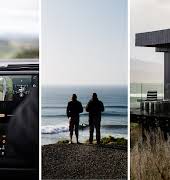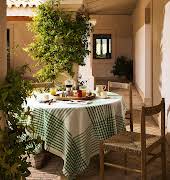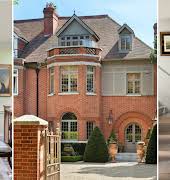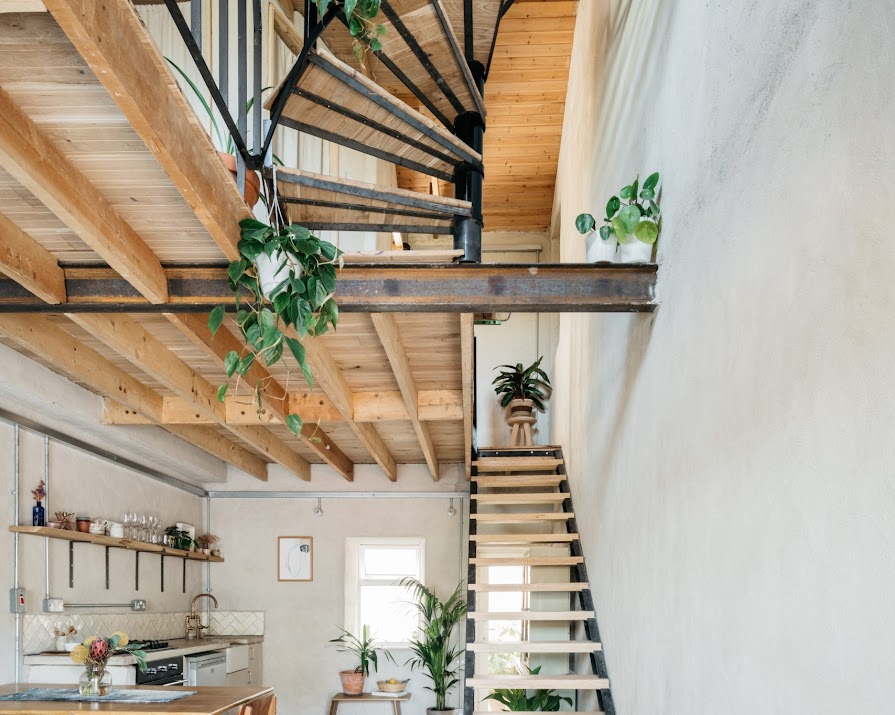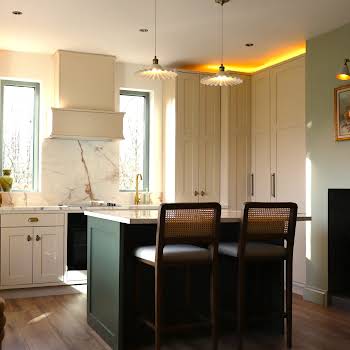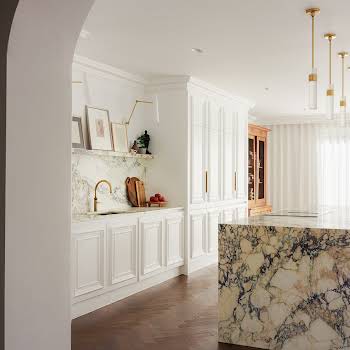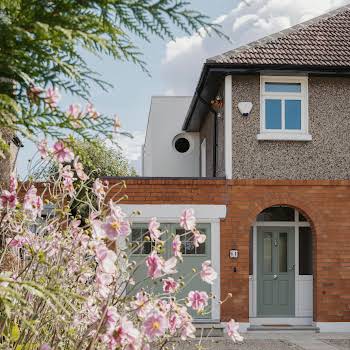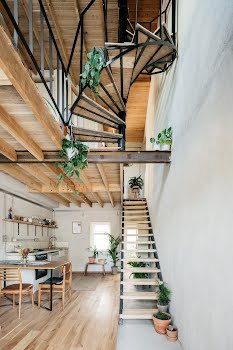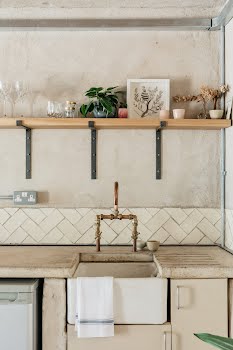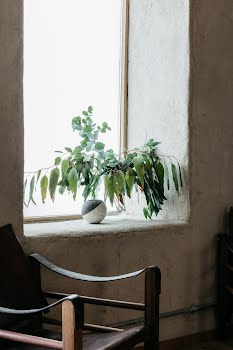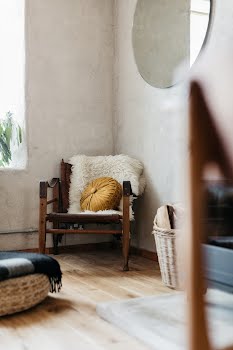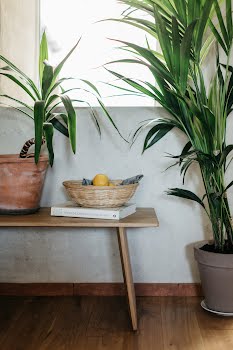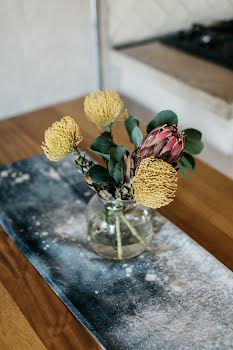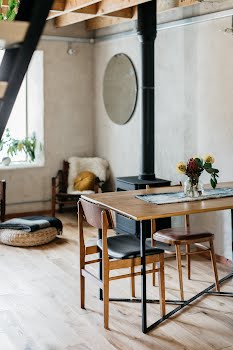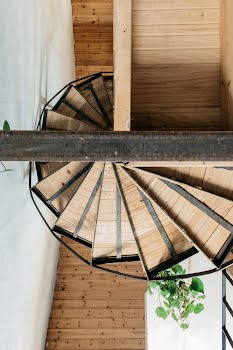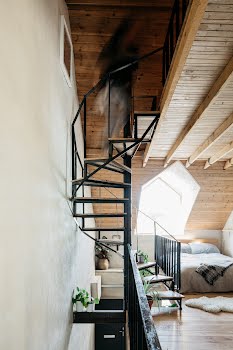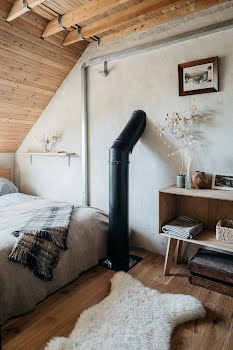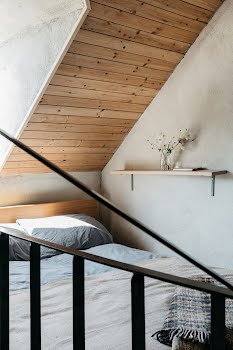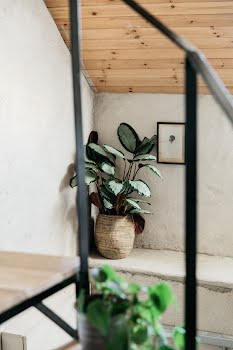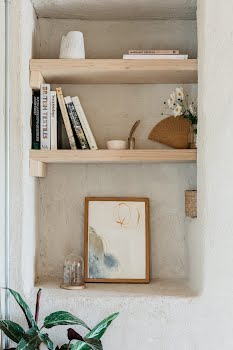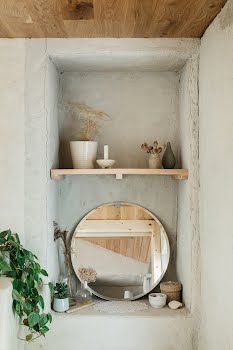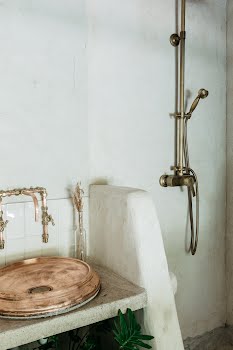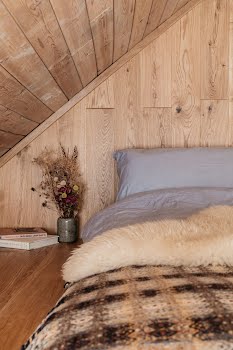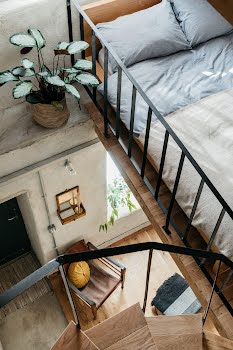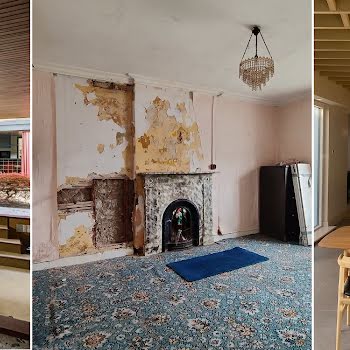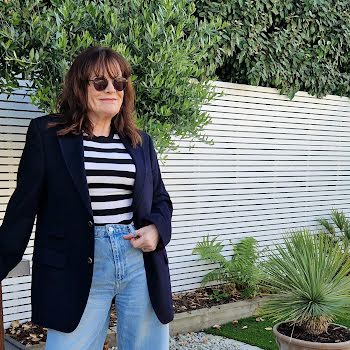This 19th-century terrace house in Ennistymon was transformed for just €25,000
By Lauren Heskin
27th Jan 2025
27th Jan 2025
Creative couple Harrison Gardner and Erin McClure made the most of their skills to breathe new life into this old property.
When pulling out plasterboard and ceiling panels in the days following Harrison Gardner and Erin McClure’s purchase of a tiny, 35-square-metre two-bedroom terrace house, they came across something from a previous renovation that opened up a world of possibilities.
“Suddenly Harrison turned around and looked at me with the biggest grin,” remembers Erin. They found that the upper floor was supported by a substantial reinforced steel joist (RSJ). The discovery meant that this creative couple could go, as Erin puts it, “wackier” with their plans for the place. Finding it she explains “was a push in the direction of design over practicality”.

Wanting to stay out of debt and therefore maintain as much of their own work as they could, they gave themselves a timeline of just six weeks and a meagre budget of €25,000. Taking on much of the work themselves, Harrison, an alternative building teacher, and Erin, an artist, designer and visual communicator, began by gutting the place.
“It was in working condition when we bought it, but it was dark and cold, with no wall or floor insulation,” says Harrison. They stripped it back to its bare bones, pulling up floors and old plasterboard. “The timber framing we found was in perfect condition – Scandinavian pine with no water damage or rot,” says Harrison.

Their idea to create a mezzanine, made possible by the existing RSJ, meant that they could completely open up the levels, creating a view from the front door that draws the eye up through the narrow house to the rafters of the attic bedroom, another surprise that the renovation revealed.
Originally just a storage area, they found that the roof area was quite substantial and decided to create a small loft, connected by a spiral staircase. “It’s a bit like going up to a treehouse,” says Erin.

Now, the ground floor holds the main living area, with seating, a small dining space, kitchen and door to a small back garden. Simple yet homely, the whole house breathes with Harrison and Erin’s sustainable approach to design.
“We share a love of organic finishes and wanted to create something calm in this little space,” explains Erin. Walls are a warm lime plaster with European oak flooring throughout that echoes the structure of the building.
“As a builder and teacher of building, I see value in celebrating the process of construction, materials and creation,” says Harrison, “and so my own building techniques have always leaned toward exposed building materials and raw finishes”.

This also extends to the fittings, and Harrison and Erin ended up making many themselves, including the shelving, taps, poured concrete worktops and dining table.
Harrison also welded both staircases on-site. Erin explains that they looked at what was available to buy locally and online, but “generally came back to the feeling that we could make a better, stronger version for less money, if we did it ourselves”.
The entire house is heated by the wood-burning stove on the ground floor. “We researched many combined system solutions,” says Erin, but after insulating the whole house with rock wool and rigid fibreglass, they realised the compact space wouldn’t need much. The internal chimney runs into the first-floor bedroom before turning outside, capturing as much of the heat generated as possible.

On this floor too is the bathroom, where Harrison built the shower using a Moroccan plastering technique known as tadelakt. Using lime plaster and marble dust, “it creates a beautiful, iridescent finish with a mottled quality,” says Erin, and it is sealed with an olive soap. “It’s one of the benefits of working with a natural material.”
Erin jokes that they essentially converted a two-bed house into a zero-bed house – “probably a bad economic investment,” she laughs – but it’s so much more than that.

Allowing the building’s history and structure to dictate the renovation has resulted in a home that feels innovative and new, yet utterly rooted in its heritage. As Erin puts it, “it’s about making something different and getting people to question and look at space differently.”
Photography Shantanu Starick. Styling Erin McClure. This article originally appeared in the January/February 2020 issue of IMAGE Interiors & Living.




